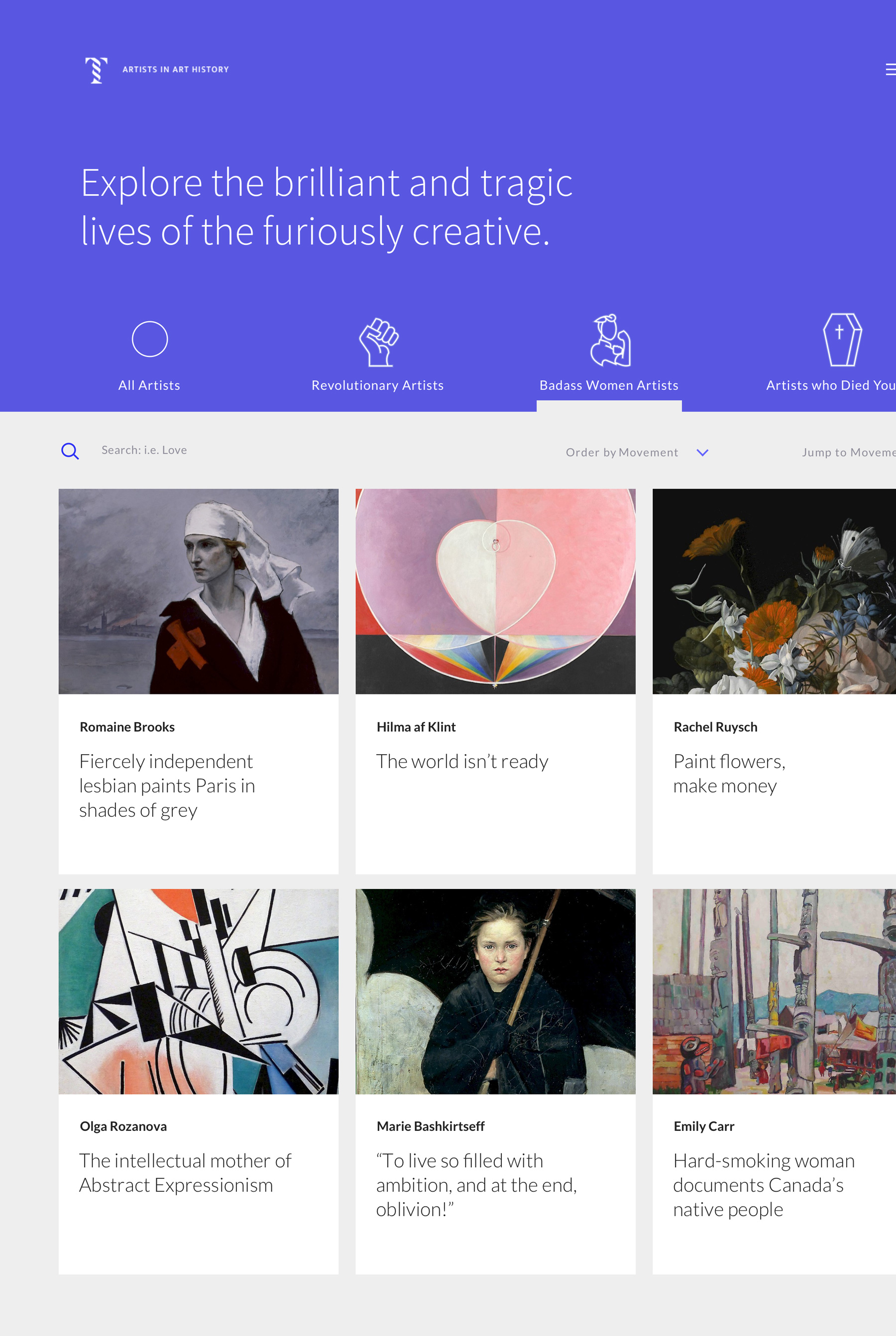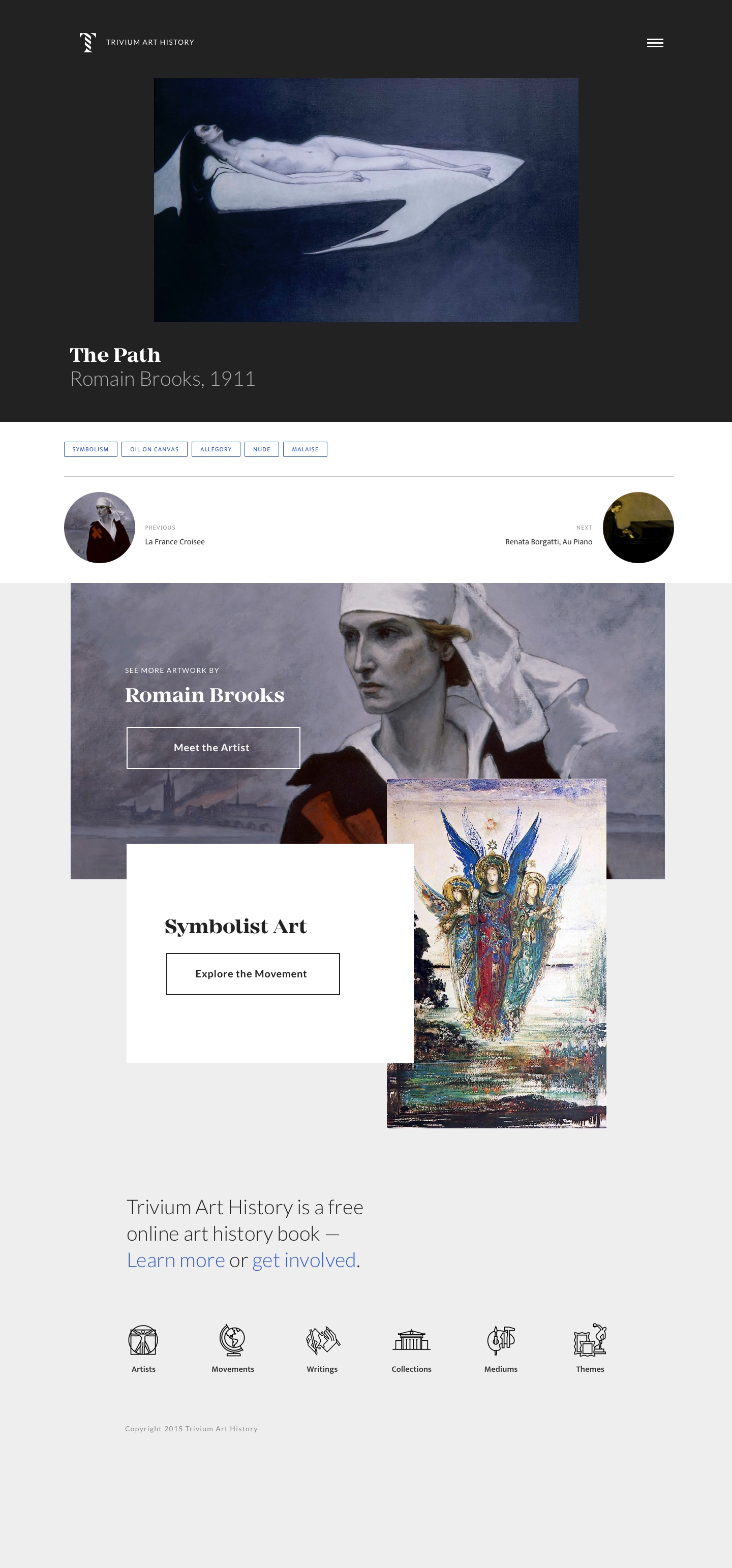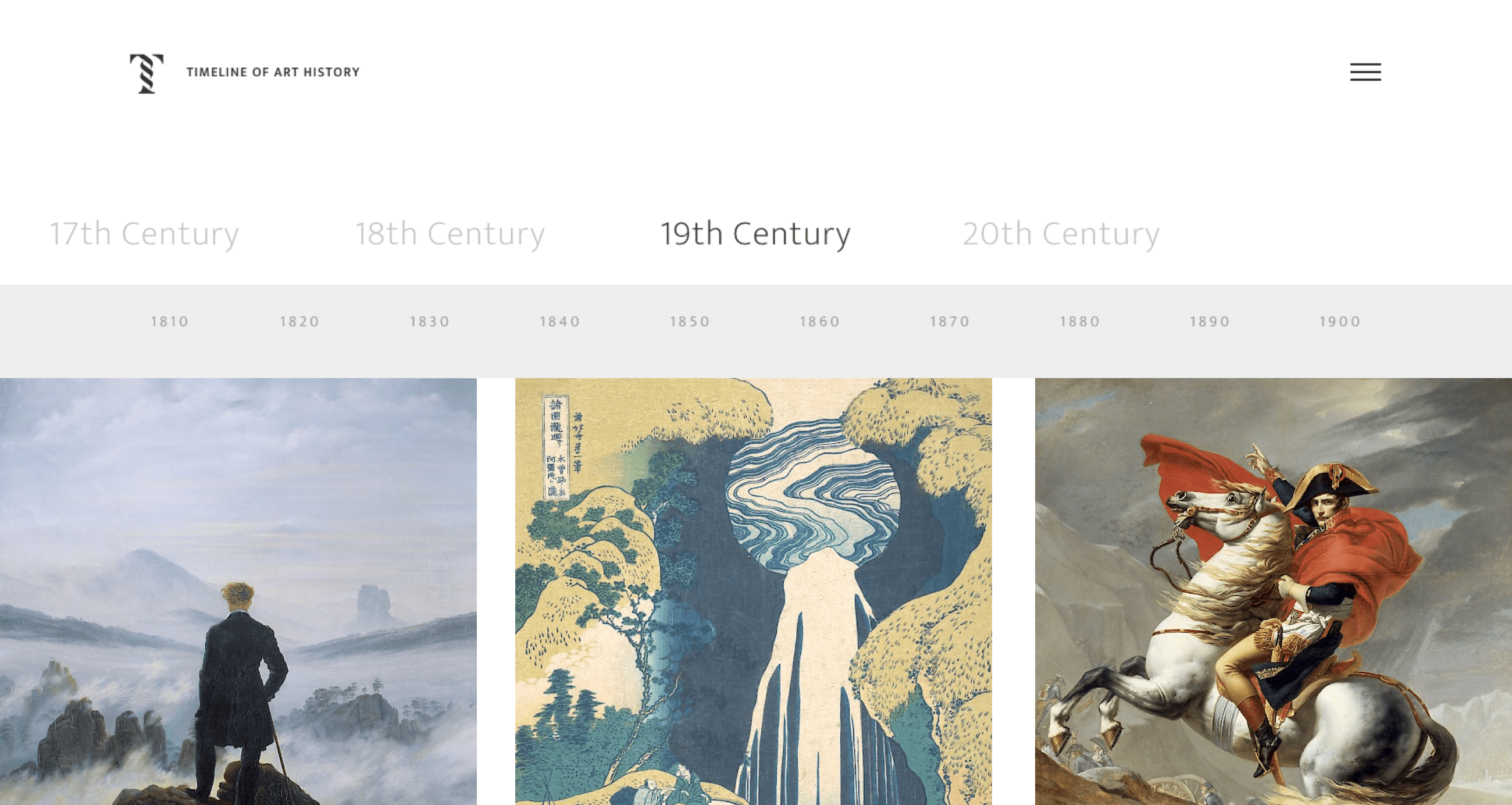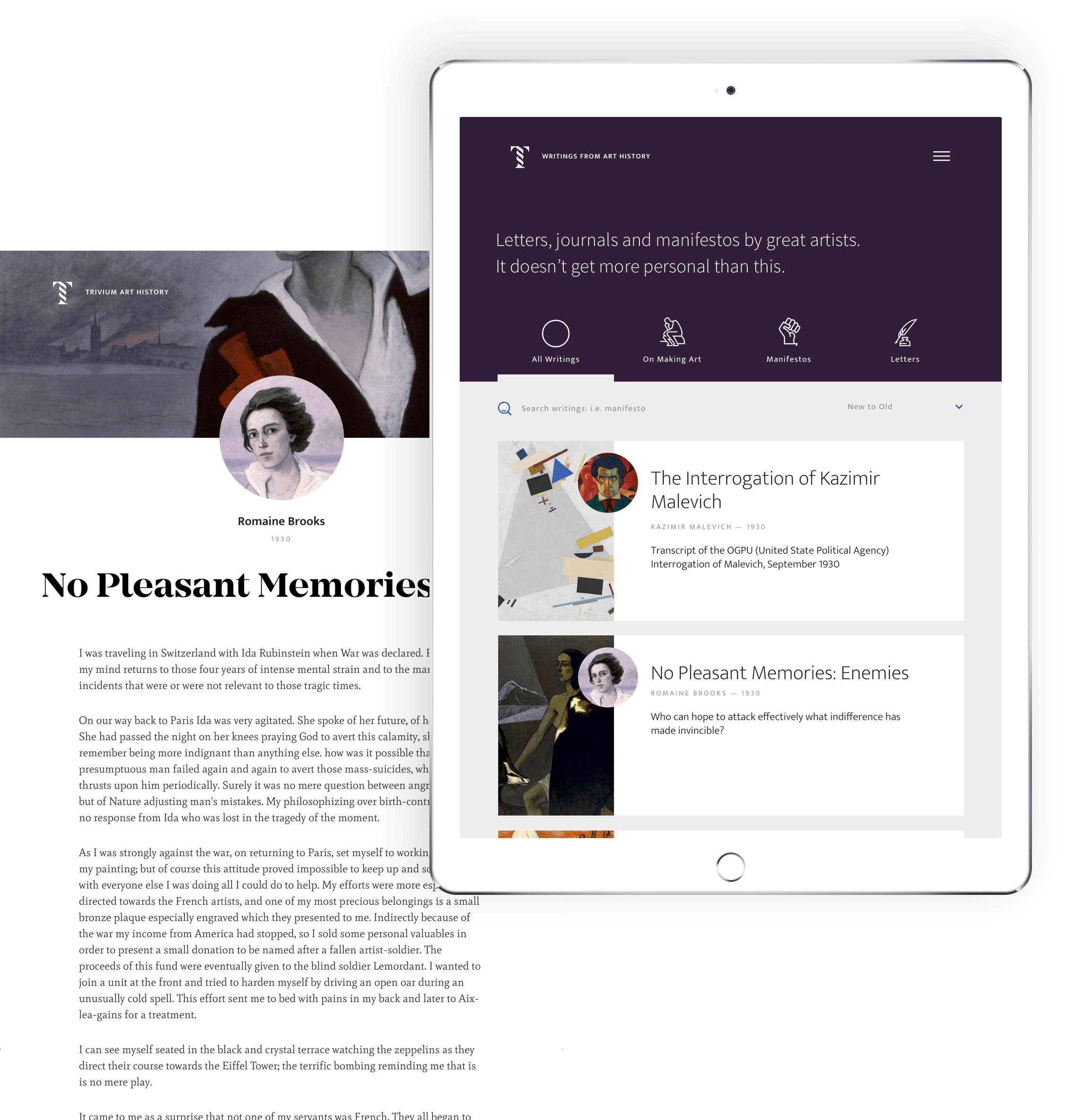Reed Enger | Experience Design
Building a better
The Problem
Interest in art history
is in decline.
 Google searches for “Art History” from 2005 — 2015
Google searches for “Art History” from 2005 — 2015
When I tell people I love art history the question 'why' hangs in the air. Like many academic disciplines, art history has been relegated to text books, distant museums and lists of names and dates. But the history of art is the history of human ambition. The wild and bloody stories of the world’s most transgressive people. Want to smooth-talk your way into wealth and power, redefine gender norms, or get away with murder? Art history is a guidebook for radical change, and Trivium is bringing it online.
I think there are three reasons why interest in art history is fading: it doesn't seem relevant, it isn't discoverable, and it seems boring. Art history doesn't show up in my Facebook feed, and even great resources like the Heilbrunn Timeline are impossible to browse casually. And finally, academic writing has left art history dour and tedious. Here’s how Trivium is turning things around:
The Solution
A new educational platform
Relevance
The world of art is as diverse as humanity itself, but for centuries its household names have been successful white men. And that’s a problem. How can we relate to a canon that doesn’t mirror our world? Trivium digs deep, scouring history to find under-represented artists of all genders, cultures, sexual orientations, and abilities.
Discovery
The best online experiences know how to catch and hold your attention. You can get lost in publishers like Medium and Nautilus or inspiration hubs like It's Nice That. Trivium uses snappy headlines and related content to create an immersive editorial experience that always surfaces something new and interesting.
Narrative
In the end it always comes down to content. Art history writing is mostly academic, intended for an audience already familiar with the subject. Trivium focuses on storytelling, offering tight, entertaining biographies and essays. Rigorous research delivered in a casual style that makes art history approachable and fun.
Create interesting entry points
To capture attention, Trivium pairs bold visuals with snappy headlines. It's a tactic shamelessly stolen from editorial design. Magazines and newspapers have honed the art of the attention grab, why not apply it to education?
Humanize site structure
Categorizing thousands of years of art requires a vast array of technical taxonomies — but adding human interest categories provide friendlier entry points. Site structure should provoke curiosity.

The detail page is the new homepage
When designing for immersion it helps to have access to analytics — to identify how users are moving through your site. In Trivium's case, I learned early-on that our visitors arrived most often on artwork detail pages. With that in mind, the artwork pages became mini-landing pages, with big, visual links to the associated artist and movement pages. Artworks are also tagged to allow exploration by theme. If the user just wants to look at every painting of horses in history, they can. A detail page should attempt to guess why the user is there, and curate options for where to go next.



Technology
I designed and built Trivium from scratch, every page, every line of code — I get up each morning at 5am to add content, develop new features, and work with our growing network of collaborators. It's also a playground, a place for me to test theories and stay current with SEO, optimization, taxonomy and recirculation strategy. Here's a brief list of the details.
- Two-column layout balances reading & browsing
- Designed in-browser to test interactions
- Interconnected structure keeps users exploring
- User tested for clarity and discovery
- Responsive and touch enabled.
Design
- Headlines & copy reflect memory psychology
- Taxonomies for theme, geography & timeline
- Collaborating with writers, historians, and students
- All content public domain or educational Fair Use
- The first single source for rare artist writings
Content
- Processwire CMS chosen for flexibility
- Front-end built in jQuery, .less, and html5
- Files compressed & unified to minimize server calls
- Image files scaled to viewport size via lazy load
- Icons embedded in SVGs, fonts in base64
Tech
- Twitter & Bitly APIs hooked for post-on-publish
- Pinterest’s location pins for collections
- Markup and architecture optimized for search
- Facebook and Pinterest open graph meta tags
- Images alt tagged with no-script for crawling
Social
Progress
Building a new canon for art history is a big job. Working with artist and educator Rick Love in collaboration with a small team of excellent writers, scholars and students we add new content each week. Our goal is to have a full textbook replacement by 2017. Our current audience is small, passionate and global — with 3/4 of our readers arriving from outside the United States. Trivium is currently not monitized, which has allowed us to reach out to schools as free resource and opportunity to contribute to art history.
I'm always happy to chat about Trivium, feel free to reach out if you've got questions or are curious about contributing to the project. And at the very least, check it out.